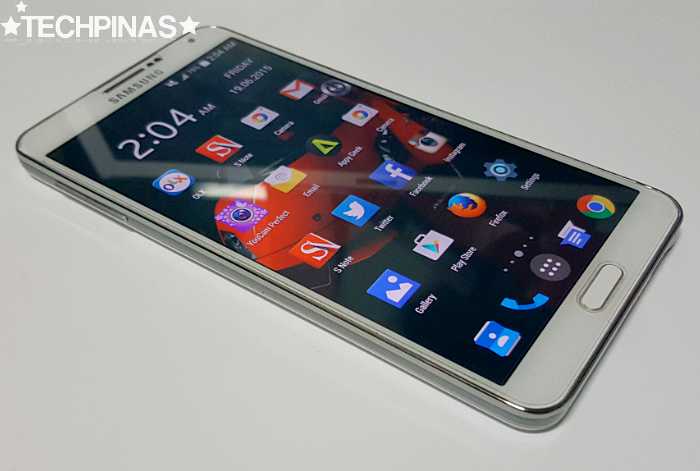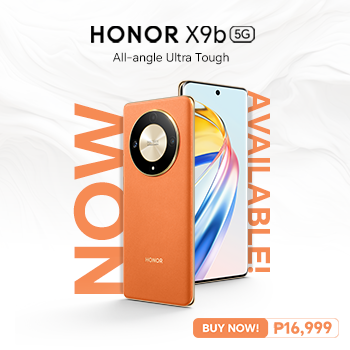Tempered Glass vs Glossy vs Matte Film Screen Protector Pros and Cons
I got this question from a TP Friend the other day: "Sir Mark, I've just bought a Sony Xperia Z3+ and I'm thinking about getting a screen protector for it. Which protector would you suggest I get? Tempered glass, glossy, or matte film? Can you talk about the advantages and disadvantages of each of those? Thanks!"

I'm glad I got that inquiry because I've always wanted to talk about screen protectors.
Most of our smartphones these days - especially flagship level ones - have scratch-resistant touchscreens and yet, interestingly enough, many of us - including me - are obsessed about putting a film on top of it just for added protection. I'm not sure if we share the same reason for doing it -- but personally, I still use screen protectors because I've had handsets that got scratched even if the manufacturer said outright that they used scratch-resistant (and even shatter-proof) glass in crafting the device. It's not that I don't trust these manufacturers anymore but all of those hairline scratches on my previous daily drivers have taught me to be extra careful when handling my beloved handsets.
Anyway, going back to the question, I've decided to make this pros-and-cons list for each type. If you want to add more to the list or to share your thoughts about screen protectors, feel free to it via our comments section below.

Tempered Glass
For those who are wondering, tempered glass aka toughened glass is a type of safety glass that's been processed by controlled chemical and thermal treatments to enhance its strength compared to normal, untreated glass. In a nutshell, tempering puts the outer surfaces of a glass into compression and the inner parts into tension to improve the panel's durability.
Pros:
1. Looks and feels exactly like - and sometimes even better than - the glass underneath it
2. The good ones - like those from RealLook - have oleophobic coating and are scratch-and-shatter-proof.
3. Doesn't affect screen viewing experience and often, it even makes the screen look more vibrant and brilliant.
Cons:
1. Expensive. Prices range from Php 500 to Php 1,500
2. Not as thin as film protectors so it adds noticeable heft to your handset - if a bit.

Glossy Film
Pros:
1. Thin and barely noticeable.
2. Doesn't affect screen viewing experience when pristine.
3. Very affordable. Prices range from Php 100 to Php 200 in malls..
Cons:
1. Easily gets scratched.
2. Shows scratches more prominently

Matte Film
Pros:
1. Thin and doesn't add heft to your handset.
2. Affordable. Prices range from Php 100 to Php 200 in malls.
3. Adds nice velvety traction when you're swiping your finger on the display.
4. Not as prone to getting scratched as glossy film protector.
Cons:
1. Affects screen viewing experience as the translucent finish makes the display look slightly dull.
So which one do I recommend? Well, the fact that I'm using all of them on my smartphones would tell you that I'm impartial to any particular type of screen protector. Each has something that makes it better or worse than the other. However, if I must recommend one, I'd advise you to try out Tempered Glass if only because it's quite new and not as common as the others. Now, for my reader who sent me that question, why not put Tempered Glass on your SXZ3+'s screen and a matte film protector at the back? Both of your phone's front and back panels are always scratch-resistant -- but again, it pays to take extra care of one's beloved gadgets.

(L-R) Glossy film screen protector on my Sony Xperia Z3, Tempered Glass on my Samsung Galaxy Note 3, and Matte Film protector on my Sony Xperia Z2.
I'm glad I got that inquiry because I've always wanted to talk about screen protectors.
Most of our smartphones these days - especially flagship level ones - have scratch-resistant touchscreens and yet, interestingly enough, many of us - including me - are obsessed about putting a film on top of it just for added protection. I'm not sure if we share the same reason for doing it -- but personally, I still use screen protectors because I've had handsets that got scratched even if the manufacturer said outright that they used scratch-resistant (and even shatter-proof) glass in crafting the device. It's not that I don't trust these manufacturers anymore but all of those hairline scratches on my previous daily drivers have taught me to be extra careful when handling my beloved handsets.
Anyway, going back to the question, I've decided to make this pros-and-cons list for each type. If you want to add more to the list or to share your thoughts about screen protectors, feel free to it via our comments section below.

Tempered Glass
For those who are wondering, tempered glass aka toughened glass is a type of safety glass that's been processed by controlled chemical and thermal treatments to enhance its strength compared to normal, untreated glass. In a nutshell, tempering puts the outer surfaces of a glass into compression and the inner parts into tension to improve the panel's durability.
Pros:
1. Looks and feels exactly like - and sometimes even better than - the glass underneath it
2. The good ones - like those from RealLook - have oleophobic coating and are scratch-and-shatter-proof.
3. Doesn't affect screen viewing experience and often, it even makes the screen look more vibrant and brilliant.
Cons:
1. Expensive. Prices range from Php 500 to Php 1,500
2. Not as thin as film protectors so it adds noticeable heft to your handset - if a bit.

Glossy Film
Pros:
1. Thin and barely noticeable.
2. Doesn't affect screen viewing experience when pristine.
3. Very affordable. Prices range from Php 100 to Php 200 in malls..
Cons:
1. Easily gets scratched.
2. Shows scratches more prominently

Matte Film
Pros:
1. Thin and doesn't add heft to your handset.
2. Affordable. Prices range from Php 100 to Php 200 in malls.
3. Adds nice velvety traction when you're swiping your finger on the display.
4. Not as prone to getting scratched as glossy film protector.
Cons:
1. Affects screen viewing experience as the translucent finish makes the display look slightly dull.
So which one do I recommend? Well, the fact that I'm using all of them on my smartphones would tell you that I'm impartial to any particular type of screen protector. Each has something that makes it better or worse than the other. However, if I must recommend one, I'd advise you to try out Tempered Glass if only because it's quite new and not as common as the others. Now, for my reader who sent me that question, why not put Tempered Glass on your SXZ3+'s screen and a matte film protector at the back? Both of your phone's front and back panels are always scratch-resistant -- but again, it pays to take extra care of one's beloved gadgets.
Labels:
Caring for Gadgets
Cellphone
Featured
Screen Protectors
Suggestons
Tech Basics
Tempered Glass Screen Protector
Tempered Glass vs Glossy vs Matte
Tempered Glass vs Glossy vs Matte Film Screen Protector



.jpg)